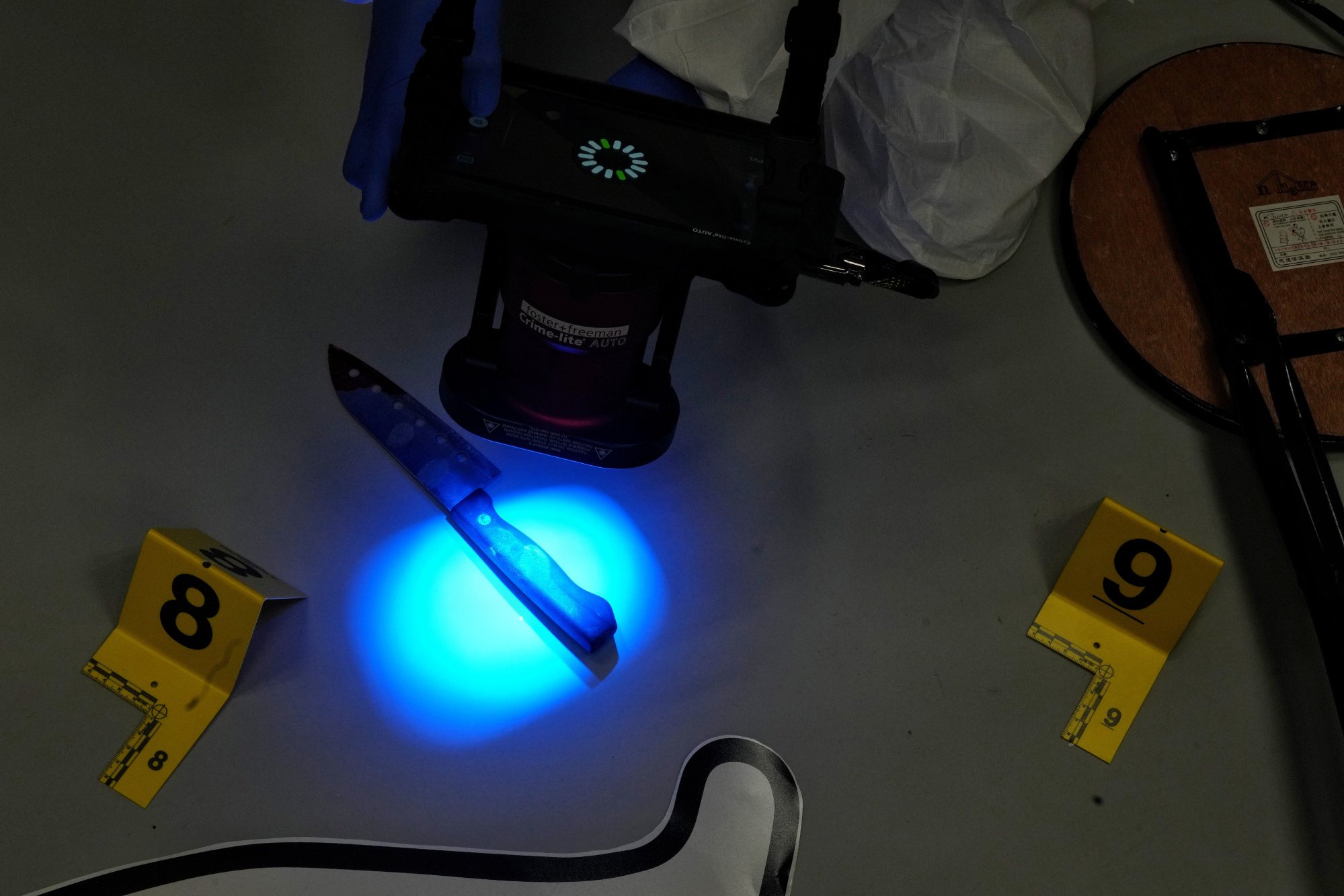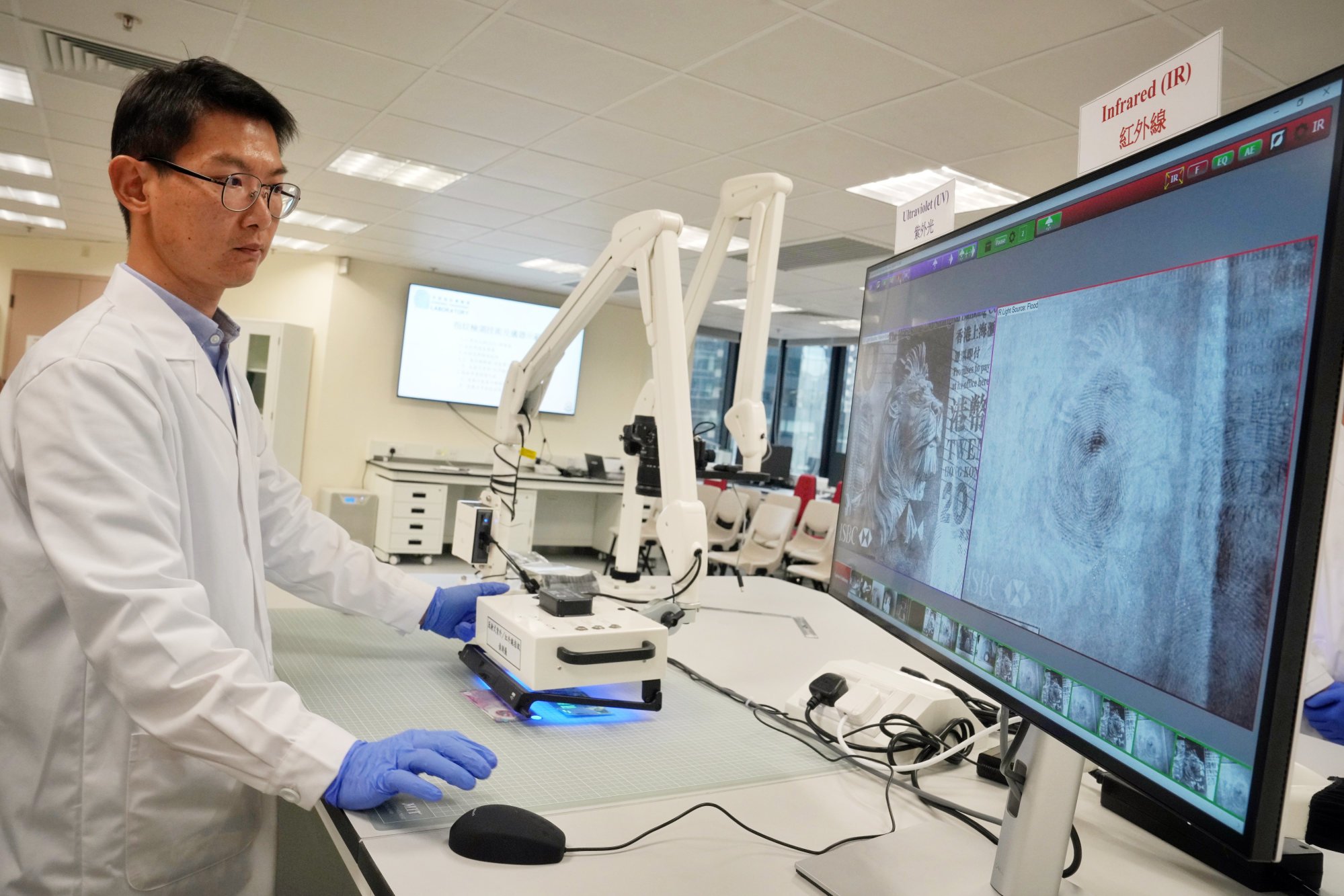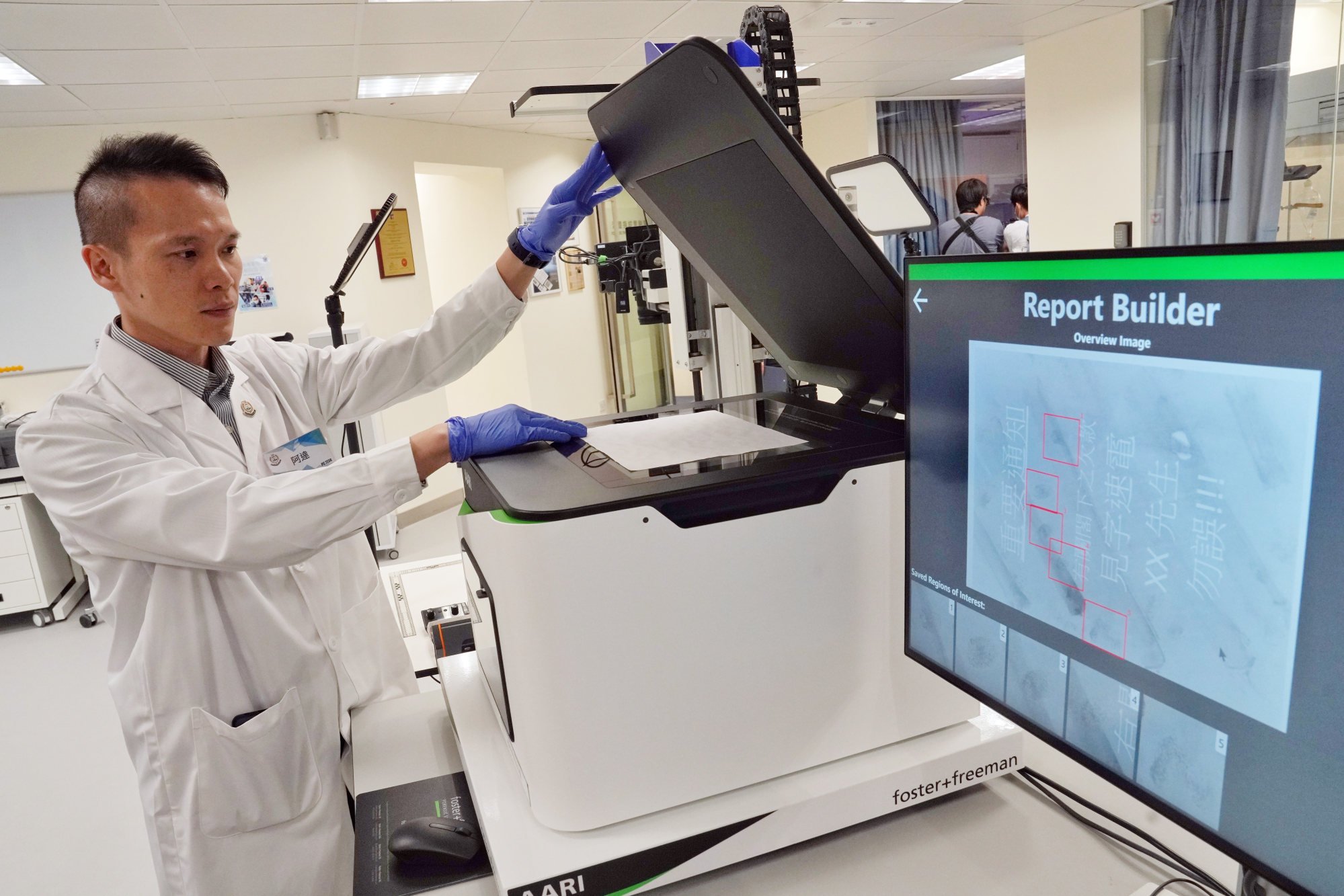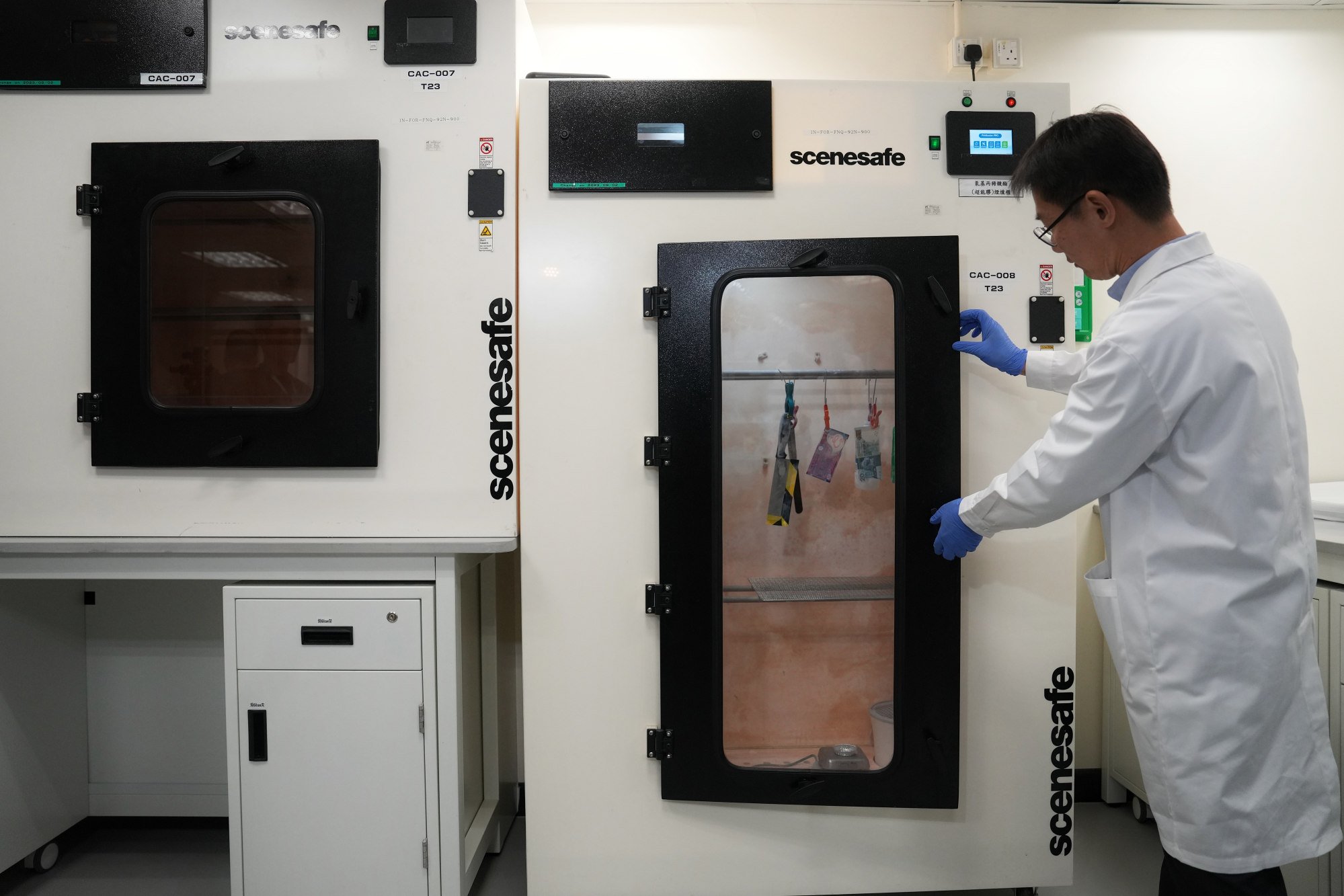Size of facility is double previous 2,000 sq ft and has eight rooms designed for different forensic tests. Force also unveils three new machines that allow officers to detect fingerprints on fired bullets and banknotes. — SCMP
Wearing a hazmat suit, a Hong Kong police officer shone a blue light around a darkened room, illuminating white fingerprints on common household objects that would otherwise remain invisible.
The officer was demonstrating how investigators could uncover the subtlest clues at a crime scene in front of reporters gathered at the force’s recently upgraded and expanded fingerprint laboratory.

The size of the facility is double its previous 2,000 sq ft, and has eight rooms designed for different forensic tests. The force also unveiled three new machines that allowed officers to detect fingerprints on fired bullets and banknotes.
“Over the past decade, the role of forensic evidence has become increasingly important in criminal trials,” Chief Inspector Tony Tan Tung-fai from the Identification Bureau said. “As a result, the number of exhibits we have to process has been constantly rising.”
Last year, the laboratory examined 31,693 pieces of evidence, which helped lead to the arrest of 572 suspects.
The laboratory has proved critical in helping officers solve some of the most serious crimes in the city since the facility opened in 1999.

The renovation, which took a year and cost HK$11mil (RM6.51mil), added five more testing rooms, taking the total to eight.
“We can separate different tests into different rooms, and our examiners work in individual rooms more freely,” said Tan, who supervises the laboratory.
The three new machines the bureau purchased from the United Kingdom allows forensic examiners to find fingerprints on previously unworkable surfaces, and identify complete ones when all that is available are partial ones.
Using a fuming chamber, examiners can visualise fingerprints on burnt metal surfaces, such as fired bullets, shrapnel and used gas canisters, using a black chemical powder.

“This is a new area compared with traditional surfaces,” Senior Inspector Roland Tung Chun-ling said. “One can imagine that after being heated, residual substances on the material would be damaged. Using traditional fingerprint detection techniques might not be successful.
“However, with this new equipment, we have a substantial chance of success in detecting fingerprints on these surfaces.”
For fingerprints on surfaces slightly corroded by secretions from glands on human skin, examiners could obtain usable evidence by heating the black chemical powder and the metal, Tung explained.
The force has also purchased two scanners, one for scanning paper for evidence and another for objects using ultraviolet and infrared light, to better extract fingerprints on surfaces that would have previously been a challenge to work with.
Senior Inspector Marin Hirunpongsun, who helps to manage the facility, said that 30 per cent of evidence assigned to her team to examine was paper, which often arrived in mass quantities from commercial crimes or cases involving business disputes.
Before the team purchased a rapid fingerprint imaging system, her teammates had to locate fingerprints on the paper evidence manually in a dark room, before taking pictures of each fingerprint for further verification, Hirunpongsun said.

For an A4 size sheet, the new imaging system shortens the process from one hour to just 10 minutes.
An ultraviolet and infrared fingerprint detecting system can scan both flat and 3D surfaces.
Examiners can look for fingerprints even on HK$10 notes printed on plastic film that were not receptive to traditional imaging chemicals, while elaborate printing on paper money in general deterred officers from viewing fingerprints.
The scanner’s display could obscure printing on the banknotes, leaving only the fingerprints visible.
Police paid HK$1.55mil (RM917,469) for the equipment purchased from Britain.
The bureau was set to roll out a mobile forensic laboratory next September, while examiners at the laboratory would monitor technological developments for future purchases if needed, according to the force. – South China Morning Post





